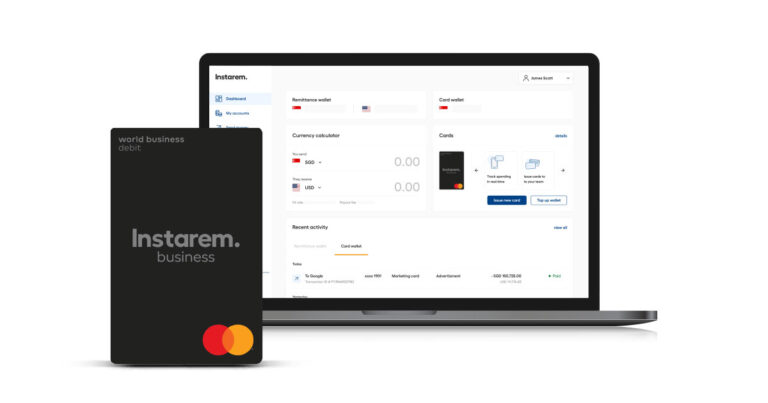Types of remittance: Inward Remittance vs Outward Remittance

This article covers:
Transferring money or, more precisely, sending money abroad can be done for various reasons. Especially when foreign migration is increasing, mostly among working individuals, the word has gained immense importance and become a household term.
In the article below, we shall discuss in detail the types of remittance– inward and outward.
What is Remittance?
The term remittance is derived from the word “remit,” which means “to send back.” Remittance refers to the transfer of funds between two parties, usually overseas. Individuals who go abroad for work frequently remit money from the working country to their home country.
Many families living in developing nations depend highly on these remittances as their primary source of income. Remittance can be done for any reason, including educational or medical purposes, gifting, or donation for a cause.
Remittance payments can also be used between businesses or an individual and a business. Alternatively, it is also used to aid developing or slow-economy countries to boost their Gross Domestic Product (GDP) during disaster relief or raise the standard of living of the people living in these economies.
To learn more about remittances, read our Complete A-Z Guide on Remittance.
Comparison Between Inward and Outward Remittance
Since we have learned that remittance plays a vital role in a country’s economic growth and infrastructural development, let us now understand and compare the different types of remittance based on the transaction process.
- Inward Remittance
- Outward Remittance
Parameter | Inward Remittance | Outward Remittance |
Meaning | Receipt of funds in the home country either from a domestic or an overseas location. | Transfer of funds from home country to overseas country. |
Example | If an NRI (Non-Resident Indian) in the US sends money to his parents to a local account in India, the fund transfer is called an inward remittance for parents. | The same transaction will be regarded as an outward remittance for the NRI person living in the US. |
Countries | Inward remittance applies to countries that receive the funds | Outward remittance applies to the countries that send money |
Role | The receiver of the funds is usually a passive participant | The sender is the initiator of the transaction |
Payment methods | Multiple payment methods can be used, like bank transfers, wire transfers, money transfer apps, etc. | Multiple payment methods can be used, like bank transfers, wire transfers, money transfer apps, etc. |
Turn Around Time (TAT) | Since most are electronic payments, TAT (Turn Around Time) is very low. | Since most are electronic payments, TAT (Turn Around Time) is very low. |
Also Read – What is a Remittance Address?
About Foreign Inward Remittance
Inward remittances may range from funding investments to supporting families in their home country. It is one of the largest sources of income for people in low-income economies and developing nations.
Inward Remittance Meaning
Inward remittance means the money is transferred into an account, domestically or through an overseas country. Foreign inward remittance refers to funds sent into an account by someone outside the home country.
Let us illustrate with an example. Mayur, an Indian national, works as a computer engineer in the US. He sends a sizable part of his salary to his parents in Lucknow every month. Every time he sends money to India to his parent’s savings account, it becomes an inward remittance for his parents.
How Does Inward Remittance Work?
The process for inward remittance or receiving money is pretty straightforward. So, if you are expecting a remittance, you must share specific details with the sender (initiator) to ensure that the funds are received safely into your account.
Every bank or money transfer service provider may require different sets of information. However, the following details remain almost constant.
- Your personal details, like full name and address
- Your bank name, address, and account number
- Your bank’s SWIFT code
- Purpose of the remittance
- Correspondent bank details (if needed), you can find them online or contact your bank directly.
It is best to check with your bank to see what details you need to share with the sender. Once done, the sender can remit money to your account. You will receive a notification from your bank once you receive the payment.
If you are based in India, you must get your bank’s Foreign Inward Remittance Certificate (FIRC). This certificate acts as proof of inward remittance to India. You may even send the remitter a copy of FIRC if needed.
Common Methods of Inward Remittance
If you wish to receive an inward remittance, the sender must initiate a payment through their local bank or any of the following payment methods.
- Wire Transfer
Wire transfer is one of the most common remittances. These transfers usually involve transferring money from one bank account to another via a SWIFT network. It is a safe, fast, and secure way to remit money for international and domestic transactions. Banks or money transfer service agencies administer and facilitate wire transfers, typically charging processing fees for their service.
- Bank Transfer
A bank transfer is used for transferring money between your bank accounts. The sender must provide account details and a routing number, and the funds are debited from their account. It is one of the most viable options for international and domestic transfers.
- Peer-to-peer apps
Technological advancements have given rise to several peer-to-peer (P2P) apps for faster remittances. These apps allow fund transfers using credit or debit cards through a website or mobile app.
Benefits of Inward Remittance
Let’s look at how foreign inward remittances are helping families and the economy.
- Benefits to individuals and families
Foreign inward remittances directly help the beneficiaries. It supports them in attaining a better lifestyle, quality education, medical facilities, and other day-to-day requirements. This process also eliminates the need for intermediaries, reducing the chances of corruption. A few countries have also introduced incentives like tax-free accounts encouraging remittance through legal ways.
- Benefits to the economy
It helps improve a country’s Gross Domestic Product (GDP) and per capita income. The inward remittance benefits the receiver and provides access to better education, healthcare, lifestyle, etc. They are also a great source of foreign exchange that helps fuel a slow-growing or developing economy. Additionally, the remitter can record how much and where the money has been sent, thus helping maintain records for cross-border business transactions.
About Foreign Outward Remittance
Outward remittance occurs when an individual or a business transfers money from their home country to another country.
Outward Remittance Meaning
When someone transfers funds out of a country, the outgoing transaction or remittance is regarded as an outward remittance.
There are several reasons why individuals or businesses send money to another country. It may be for medical or education needs, business transactions, donations, etc. Whether you are a parent funding your child’s overseas education or a working professional sending money to their family for day-to-day expenses, you will be familiar with outward remittances. Businesses, too, undertake outward remittances for commercial transactions. Foreign outward remittance is the process of sending money overseas.
In the context of the example we took for inward remittance when Mayur transfers money from the US to India, it is an outward remittance for Mayur..
How Does Outward Remittance Work?
Technological advancements and seamless processes have made foreign money transfer relatively simpler and convenient for both the remitter and the recipient. The process for outward remittance can be divided into three steps.
- Step 1: Select the most suitable outward remittance service
There are multiple ways through which you can transfer money internationally, like bank transfer, international wire transfer, and money transfer agent. Weigh the features and benefits different service providers offer and choose what best fits your requirement.
- Step 2: Gather recipient details
You must collect the recipient’s full name and address, bank account details, SWIFT code, and purpose of remittance to proceed with the transaction. Ensure all the details are accurate to avoid any rejection.
- Step 3: Complete the transaction
Provide these details to the service provider or the bank, ensure the transfer amount is within limits, and you adhere to all rules and regulations of your home country.
Common Methods of Outward Remittance
There are several ways to transfer money abroad; some of the common methods include:
- Online money transfer
This is the simplest and the most convenient way to transfer money internationally. There is less documentation requirement, and the process is relatively quick. Online money transfer service providers like Instarem offer a fast* and secure way of transferring money internationally at an affordable cost**.
- Wire transfer
Compared to an online money transfer, a wire transfer may be cheaper but takes more time than the former. The process involves intermediary banks that send money overseas and settle it between themselves. They charge a fee for their service.
- Bank drafts and checks
These are offline and traditional payment methods wherein the bank issues the draft or check for the payer and allows another bank to draw funds from the issuing bank. Typically a remittance advice letter is given by the customer to the supplier, which proves that the invoice payment is complete.
Learn more about “Remittance Advice” here.
Benefits of Outward Remittance
Outward remittance has a few benefits:
- You can send money to your friends or family in their time of need.
- Take advantage of forex rates in a hassle-free manner
- Transferring money for investment in international securities or other investment avenues diversifies your portfolio.
- The secure banking and transferring network limits the chances of fraud and financial harm to both parties.
Remittance Transfer Rules for Different Countries
Foreign remittances are highly regulated aspects, which require the sender and the recipient to abide by the regulation, guidelines and fulfill all the obligations. Typically, both parties must submit at least a few of the details below, which may vary from country to country.
- Purpose of remittance
- Relationship between sender and recipient
- Personal details, including full name, address, and date of birth
- Occupation and business
- Bank details
- Source of funds for remittance
If the transaction is between companies, documents such as invoices, contract details, identification documents, and other accounting documents may also be needed to be furnished.
Apart from these details, countries may have regulations regarding remittance limits and other international money transfer procedures that must be followed and complied with.
You can also check the International Money Transfer Limits for different countries.
Japan
- The Japan Government monitors all international funds transfers of more than JPY 2,000,000 (USD 1,429.72) (as of 19 Jul, 2:19 pm UTC).
- The Bank of Japan handles the monitoring. Thus, the bank or the remittance provider must share all the transaction details with the monetary authority.
- The remitting parties must provide identity details and other information to complete the transaction.
- According to the Foreign Exchange and Foreign Trade Law, if payment exceeding JPY 30,000,000 (USD 2,15,046.05) (as on 20 July, 7:38 am UTC) and is received between Japan and a foreign country or between a resident and a non-resident, a “Report of Payment or Receipt of Payment” must be submitted to the Minister of Finance.
United States of America
- Under the US Federal Law, making electronic transfers of more than $15 from the United States to people or companies in foreign countries is regarded as remittance transfer if done through a remittance transfer provider.
- Regulation E is the framework that establishes the rights, liabilities, and responsibilities of participants in the “Electronic Fund Transfer” (EFT) industry as defined by the Dodd-Frank Wall Street Reform and Consumer Protection Act.
- The new CFPB Remittance Transfer Rule provides more information to the recipient regarding the exchange rate, fees and taxes charged, and the exact amount they would receive. Also, if there is any error with the remittance, the transfer provider will have to investigate the matter and notify the consumer within 90 days. Additionally, the remitter can cancel the remittance transfer within 30 minutes without any of it being deposited into the recipient’s account.
European Union
- To strengthen anti-money laundering (AML) and counter-terrorist financing (CTF) regulation, the EU rolled out Sixth Money Laundering Directive in 2021. The Funds Transfer Regulation (FTR) is a money transfer regulation that plays an essential role in this regulatory drive. European money transmitters and payment services must comply with this regulation.
- As per this regulation, detection and verification of personal information may be needed by submitting documents such as a passport, driving license, or other government-department-released documents. There are two instances where it may be needed if the transfer is funded by cash or anonymous e-money or the transfer value is more than €1,000, including multiple transactions.
Australia
- The Australian Transaction Reports and Analysis Centre (AUSTRAC) supervises international remittances and monitors, prevents, and detects any non-compliance.
- The International Fund Transfer Instruction (IFTI) for businesses involves inward and outward remittance. Businesses that receive an IFTI into Australia or send an IFTI out of Australia must submit an IFTI report to AUSTRAC within 10 business days.
- Individuals traveling in and out of Australia must declare cash and non-cash forms of money if the total value is AUD 10,000 or more. Also, you must declare if you send or receive money through traditional methods like mail, courier, air, or sea freight. There is no limit to international remittance that you can do in Australia. Still, you or the remittance provider must submit a report to AUSTRAC if the transfer crosses a certain amount.
- The taxation of remittances in Australia depends on factors like the amount and source of funds. In any case, you must declare to AUSTRAC any transfer above AUD 10,000.
India
- India has laid down different guidelines for inward and outward remittances. RBI guidelines on inward remittance mention the recipient bank must issue a Foreign Inward Remittance Certificate (FIRC). It is an acknowledgment that proves the receipt of money in their account from overseas.
- There are two ways individuals or entities in India can receive a foreign inward remittance: Rupee Drawing Arrangement (RDA) and Money Transfer Service Scheme (MTSS).
- RDA has no stipulated transfer limits for personal purposes, whereas it has an upper limit of ₹15 lakh for business remittance. Every foreign inward remittance via MTSS has an upper limit of $2500.
- For outward remittance, businesses can send up to USD 5,00,000 per year and individuals are allowed to transfer up to USD 2,50,000 (INR 2,04,86,975) (as on 20 July, 10:19 am UTC) abroad per fiscal year under the Liberalised Remittance Scheme (LRS). This limit can be utilized in a single transfer or multiple transfers.
- The RBI guidelines on outward remittance in India require the remitter to submit the Know Your Customer (KYC) documents for proper processing. Indian residents can transfer money abroad through RBI-approved authorized dealers, namely – Authorized Dealer Category I (Bank) and Authorized Dealer Category II (Money changers).
- The RBI limits the use of online payment services to send money abroad for private transactions.
- From 1 Oct 2023, tax rates on foreign outward remittances under LRS, except for medical and educational expenses, will be subject to 20% tax collected at source (TCS). The TCS will also apply to credit card usage outside India.
Also Read – What is LRS: liberalised remittance scheme
Factors to Consider Before Executing an Outward Remittance
- Speed: When transferring money overseas, consider the time it takes to be credited to the beneficiary’s account. The time taken for a money transfer depends majorly on the type of remittance method used. The outward remittance charges may differ depending on the method chosen.
- Exchange rate: Foreign exchange rates fluctuate based on several economic and international factors. Since foreign outward transactions involve currency conversion, you must always check the exchange rate. Even a minor deviation may result in a big difference in amount, especially for large transition amounts.
- Fees and charges: To process your transaction and transfer the amount, the service provider or the bank typically charges a fee which may be fixed or a percentage of the transaction value. Banks or service providers typically do not levy any inward remittance charges. Apart from this, there is also a foreign conversion charge and service tax for each party in the transaction.
Conclusion
Understanding remittance and its types is crucial to initiate an international money transfer. Knowing the country-specific guidelines and rules to adhere to the law and avoid rejections is also equally important.
Inward and outward remittances can be done for several purposes, and the choice of method may depend on various factors like the urgency of the transfer, exchange rate, costs, and convenience. Choose a reliable and hassle-free money transfer provider, Instarem, that makes international money transfers easy and at your fingertips.


























